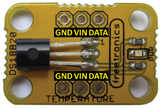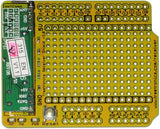For something to scare people or give them a fright during Halloween, consider getting started on this fortune-telling machine. Based around an Arduino board and a .wav file playback shield, a coin acceptor you can find on eBay, a skull and a lot of hardware - you can make a fortune teller with an adjustable personality. The curious customer sets the level of 'evil' using a knob then inserts a coin for the spooky message - for example:
Si if you enjoy Halloween or looking to make a fortune-telling machine, this is a good start. And for more, we're on twitter and Google+, so follow us for news and product updates as well.

When making your own fortune teller or other project, increase reliability and project lifespan by using a protoshield instead. In doing so, consider our range of ProtoShields. From the tiny LeoStick to the Mega range, we offer a complete range for you to work with.

























